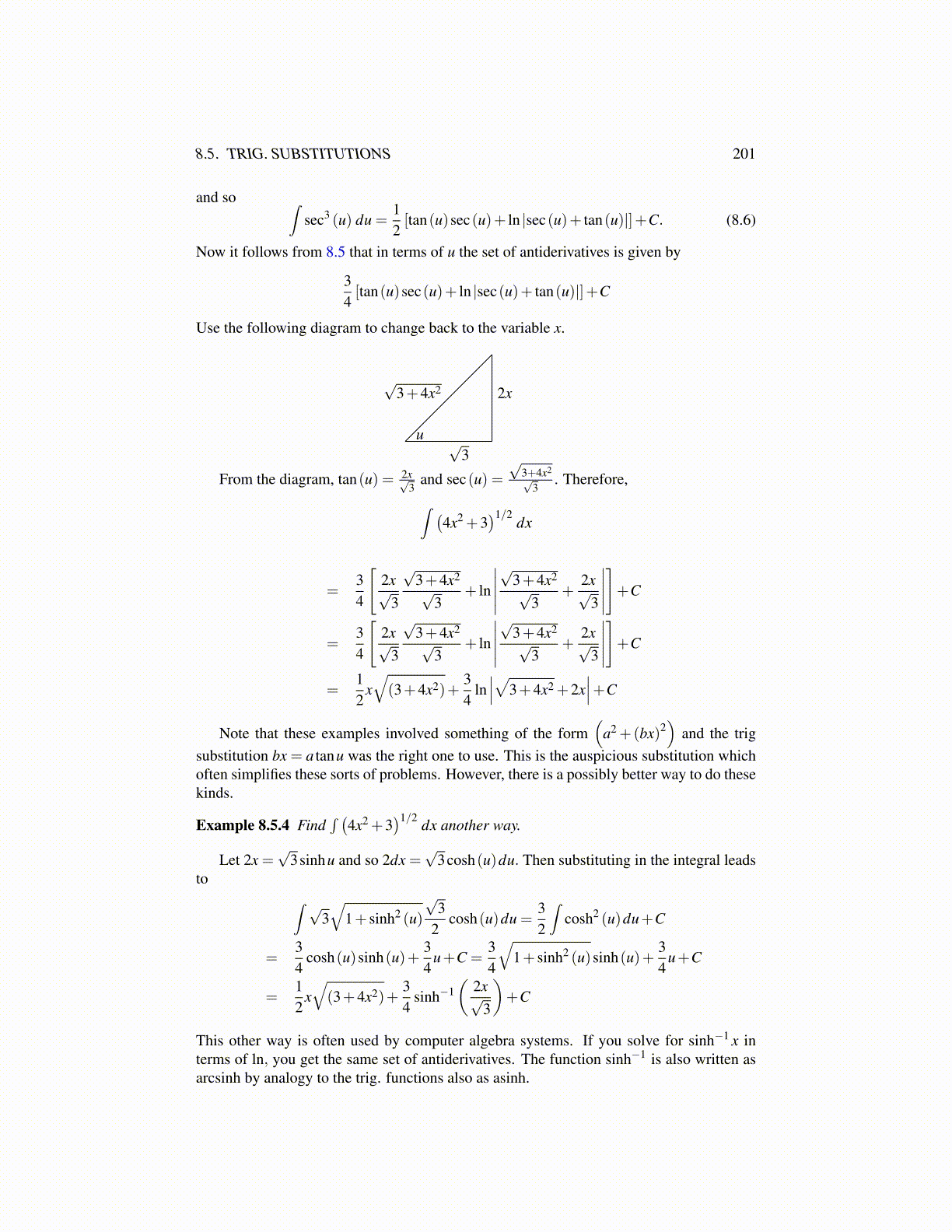
8.5. TRIG. SUBSTITUTIONS 201
and so ∫sec3 (u) du =
12[tan(u)sec(u)+ ln |sec(u)+ tan(u)|]+C. (8.6)
Now it follows from 8.5 that in terms of u the set of antiderivatives is given by
34[tan(u)sec(u)+ ln |sec(u)+ tan(u)|]+C
Use the following diagram to change back to the variable x.
2x
√3
√3+4x2
u
From the diagram, tan(u) = 2x√3
and sec(u) =√
3+4x2√
3. Therefore,∫ (
4x2 +3)1/2
dx
=34
[2x√
3
√3+4x2√
3+ ln
∣∣∣∣∣√
3+4x2√
3+
2x√3
∣∣∣∣∣]+C
=34
[2x√
3
√3+4x2√
3+ ln
∣∣∣∣∣√
3+4x2√
3+
2x√3
∣∣∣∣∣]+C
=12
x√(3+4x2)+
34
ln∣∣∣√3+4x2 +2x
∣∣∣+C
Note that these examples involved something of the form(
a2 +(bx)2)
and the trigsubstitution bx = a tanu was the right one to use. This is the auspicious substitution whichoften simplifies these sorts of problems. However, there is a possibly better way to do thesekinds.
Example 8.5.4 Find∫ (
4x2 +3)1/2 dx another way.
Let 2x =√
3sinhu and so 2dx =√
3cosh(u)du. Then substituting in the integral leadsto ∫ √
3√
1+ sinh2 (u)
√3
2cosh(u)du =
32
∫cosh2 (u)du+C
=34
cosh(u)sinh(u)+34
u+C =34
√1+ sinh2 (u)sinh(u)+
34
u+C
=12
x√(3+4x2)+
34
sinh−1(
2x√3
)+C
This other way is often used by computer algebra systems. If you solve for sinh−1 x interms of ln, you get the same set of antiderivatives. The function sinh−1 is also written asarcsinh by analogy to the trig. functions also as asinh.